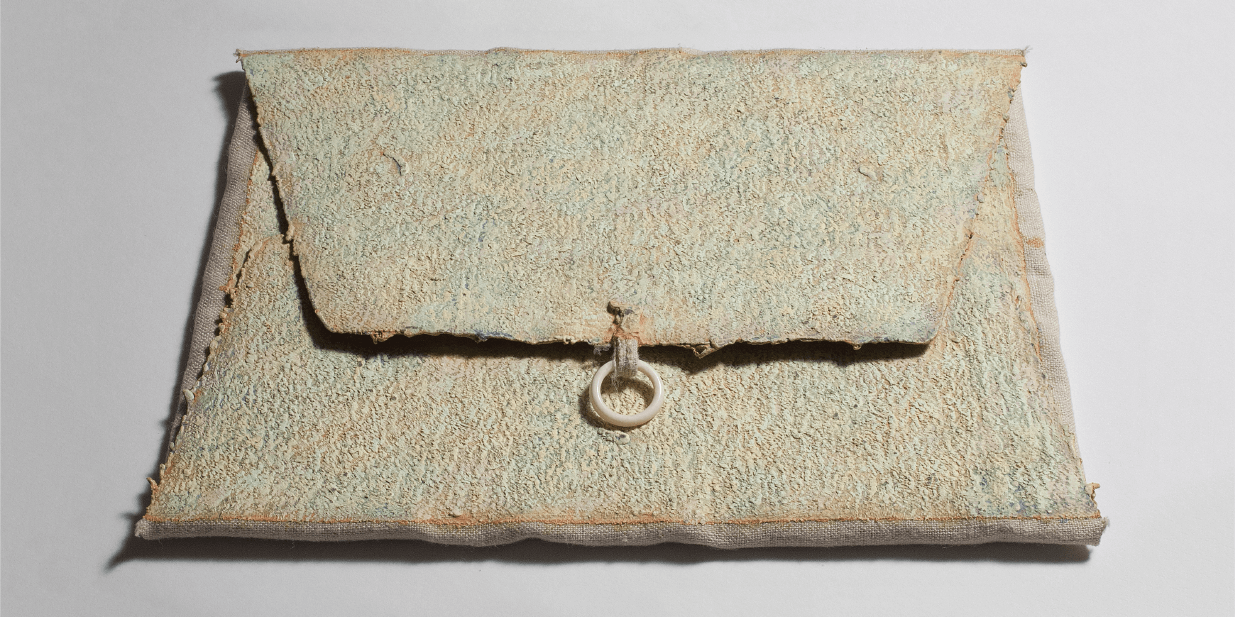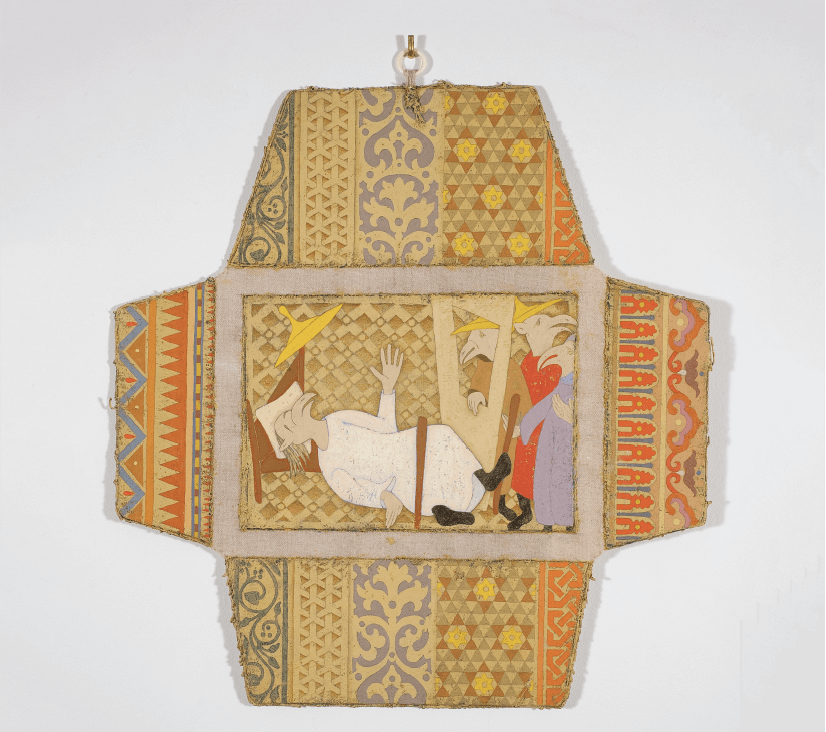Above: Detail from Archie Rand. 326: To Send the Impure from the Temple (Numbers 5:2), 2001-2006. From the series The 613. Acrylic on canvas. 20 x 16 in. Photo by Samantha Baskind
Artists on Their Art

Jeffrey Abt. Traveling Homeland (Hospital), 2021. Oil on linen. 19 x 6.7 in. (closed).
This is one in a series of pieces using portability to embody the diasporic condition and the preservation of memories. It is fashioned as something that can be readily hung, or, when necessary, quickly taken down, folded into a packet, and tucked away, as when fleeing danger or seeking a better life. Made as though for a migrant, it requires little space or care.
When opened, the central panel of the piece depicts an imagined scene based on accounts of hospitalizations during the Covid pandemic, when dying patients were isolated from family. The simplified and flattened treatment of the figures is intended to distance the experience as though recalled from memory rather than captured in the moment like a photograph. The setting is meant to be intimate and unposed. The figures are derived from those in the Birds’ Head Haggadah, an early fourteenth-century manuscript created in what is now southern Germany. In the Haggadah the figures were used to illustrate Passover preparations as well as biblical stories associated with the Passover narrative. They were adopted to populate narrative panels in the Traveling Homeland series because of the ways in which the figures, despite being rendered almost uniformly with beaks, head coverings, and gowns, often convey a striking degree of individuality. Also appealing is the uncertainty surrounding why figures in the Haggadah were depicted with birds’ heads and what kinds of birds they might be—raptors or less aggressive species, for example.

Jeffrey Abt. Traveling Homeland (Hospital), 2021. Oil on linen. 15.5 x 14.5 in. (open).
The patterns running through and adjacent to the central panel come from several historically and geographically diverse ornamental traditions. They are used in this work like traces of the times and regions through which it has passed, arranged as though an accretion of designs, each added when this object was handed down from one generation to the next or carried from one cultural setting to another. The formatting of the patterns as bands was partly a formal solution, but also inspired by the appearance of interior ornamentations in the wood synagogues of Poland, Lithuania, and Ukraine, where lumber planks, on which decorations were painted, would age and separate, leaving gaps that sometimes disrupted or were worked into the decorative schemes.
…one in a series of pieces using portability to embody the diasporic condition and the preservation of memories.
The title for the series, of which this is the third piece, is taken from Daniel Boyarin’s A Traveling Homeland: The Babylonian Talmud as Diaspora (Philadelphia: University of Pennsylvania Press, 2015). None of my works in the series are illustrations of Boyarin’s ideas, but the series does grapple with the underlying insights that motivated the book and shape its content. In that sense, the Traveling Homeland series aims to materialize life in exile and on the move, drawing on the experiences of Jewish history for thinking about many peoples in the past and now. Of particular interest are the analogy of folding/unfolding with memory acts: dislocations of places and events, the bodying forth of experiences from one’s past into the present, the ways in which occurrences are repeatedly recalled and then recede, and the interanimations and layering of memories with everyday life.
.
JEFFREY ABT is professor emeritus in the James Pearson Duffy Department of Art and Art History of Wayne State University. He has a BFA degree from Drake University and studied at Hebrew Union College–Jewish Institute of Religion in Jerusalem before completing an MFA at Drake. He’s an artist and writer, with artwork in museum and corporate collections throughout the United States, and he has exhibited in solo and group exhibitions in America and abroad.